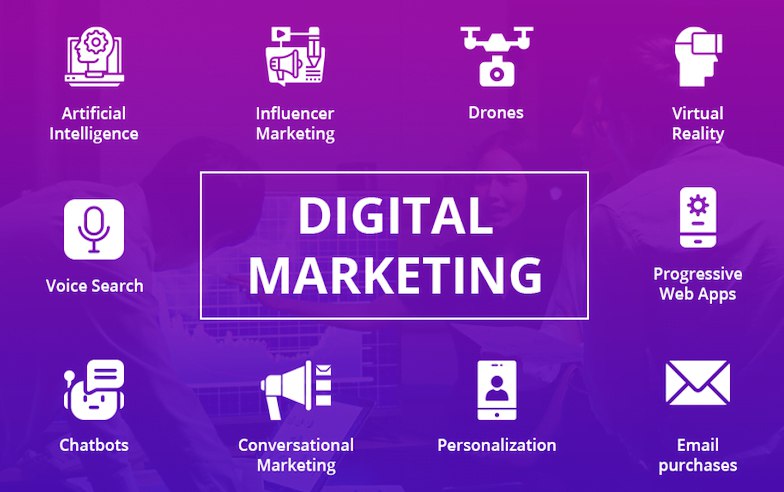Contact Us
Related Posts
Category

You’ve certainly learned about target markets if you own a company or if you’ve spent some time designing your marketing campaign. The general concept behind identifying your target audience is that you need to know who you’re trying to reach with your messages if you want them to be effective and have a significant impact on your company’s results. Target audience research is critical because it ensures that every aspect of the consumer experience is built with the target group in mind from the beginning. The more relevant your content is to the people with whom you’re making and selling it, the more likely they’ll become customers. In reality, once you’ve created a buyer persona, you can use it to guide every step of the customer journey, from onboarding to nurturing to purchase. But, first and foremost, how do you identify your target market? Let’s take a peek at some of the possibilities.
What You Would Need to Develop A Buyer Persona
First and foremost, if you want to build a successful buyer profile, you must go into great detail and incorporate various characteristics in order to really understand your target customer. Although the examples we’ve given thus far are sufficient to give you a general idea of what a buyer persona looks like, they’re far too high-level to be of any real use in the field. Furthermore, most businesses deal with a variety of different consumer groups, so only one buyer persona is unlikely to be sufficient. Developing so many customer personas, on the other hand, can cause you to lose focus or leave your content marketing department overworked in an effort to please everyone.
We’d suggest keeping an eye on the following audience insights:
Demographics: The most obvious type of data to look at, demographics define a person’s age, gender, religious views, physical location, and other important characteristics.
Interests: When we speak about your audience’s interests, we’re referring to the various types of content they consume as well as the verticals they’ve shown interest in through their behavior, such as following Facebook pages.
Psychographics: Psychographics is the study of psychological characteristics such as attitudes, interests, beliefs, heights, and lifestyles.
This is focused on real acts people take, such as joining the email list or signing up for a free trial. Identifying a prospect’s habits will help you build content that is more relevant to them.
You may believe you’re ready to start creating buyer personas at this stage, but we recommend you wait a little longer. The question of “what is a target audience?” has remained unanswered.
We do need to discuss consumer analysis and how you can use this information to build a more detailed profile of your target customer.
Here are 7 steps to help you figure out who you want to reach out to. Find Your Ideal Audience in 7 Easy Steps
- Discover the target audience’s needs, desires, and pain points.
When it comes to identifying the target audience, this is possibly the most critical move. People would be more than willing to spend their money with you if you can identify these pain points and put your product as a solution to them. Of course, it’s difficult to know exactly what those pressure points are until you’ve narrowed down your target audience. You can recognize how your product/service can help to overcome certain pain points and make the lives of your ideal customer simpler if you have your audience in mind and have a clear understanding of their needs and desires.
Conducting competitor research is one of the most critical aspects of designing a marketing strategy so you can benefit from their marketing efforts and see what succeeded (and what didn’t). You can then apply what you’ve learned to your own marketing efforts, effectively learning for free without having to spend money on marketing campaigns that aren’t working, as your rivals did. That said, just because someone is a rival doesn’t mean they’re targeting the same demographic as you. Don’t just imitate what your rivals are doing when it comes to defining your target audience. Rather, devote some time to creating your own, more precise target audience. It’s fine if your ideal consumer falls into the same demographic as your rivals.
- Make a list of all audience insights that you already have.
You should have a good collection of insights under your belt by this point in your journey to identify your target audience, which you can use to start building a user persona. Take the time to list all of your thoughts before you get started so that you have everything in one place. Feel free to provide as many details as possible and to go into great detail. True, when it comes to creating the final user identity, less is enough. That’s because you want to be as concise and to the point as possible when defining your target audience and creating an identity in order to make them useful and accessible. However, during the analysis stage, you’ll want to collect as much information as possible.
- Deal with any potential annoyances or objections.
Following up on our first argument, you will begin to answer your consumer’s pain points and objections to buying your product once you have a better understanding of them. Part of it is education; you’ll need to have information that demonstrates how you can assist others. You must strike the right balance at the same time. You’ll lose people’s interest and scare them away rather than building your community if you bombard them with product details and educational material.
- Conduct additional audience analysis through social media and your website.
Your website and social media accounts are untapped resources for analytics and demographics data. Indeed, looking at who is already consuming and loving your content will help you identify your target audience. The danger here is that you’ve built up an audience that isn’t important to your company, particularly if you’ve been creating and distributing content without a strategy.
- Hold a webinar to attract and sell new customers.
Webinars are an essential component of inbound marketing and with good purpose. They will offer the audience a lot of value while still portraying you as an authority figure. They’re arguably the most effective form of content you can expect to produce when done correctly, as long as your company avoids coming across as too “sales.” B2B companies and those with a longer sales cycle can find them particularly useful. They’re also perfect for service businesses because they let them showcase their unique experiences and abilities in a way that encourages customers to try before they purchase.
- In order to receive more, you must first give more.
It becomes a gift that keeps on giving once you identify your target audience and create content marketing campaigns. This is particularly true if you can develop a following on social media platforms like Facebook and Instagram, or if you can create “evergreen” or “live” content, which never expires. You should start deploying more and more marketing strategies after you’ve narrowed down your plan and perfected your methodology to see ever-increasing success. Remember that this method of marketing is all about providing value, so the more value you provide to your audience, the more value you’ll get in return.
Conclusion
Now that you know how and why to define your target group, it’s up to you to start profiling your potential customer and determining who you want to meet and how you want to reach them. The good news is that once you’ve identified your target market, your company will start to see a steady increase in profits over time. When it comes to anything from sales and promotions to business growth and beyond, you’ll find it easier to meet your target as your company aligns itself more closely with the audience you’ve identified. You should have all of the skills you need to identify your target audience and reposition your company by now, so all that’s left is for you to do it.















































































